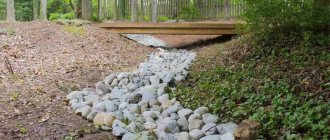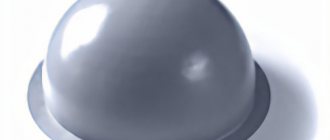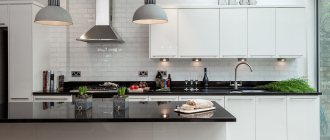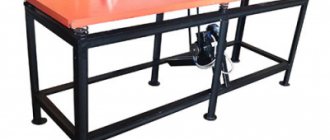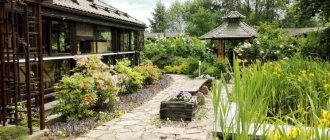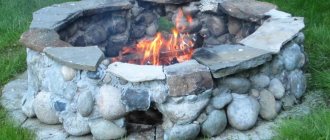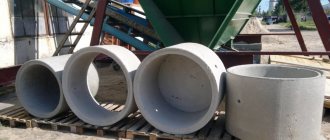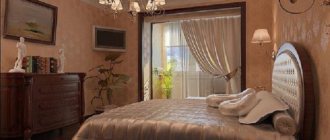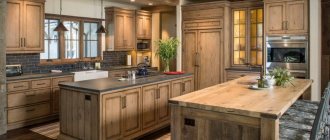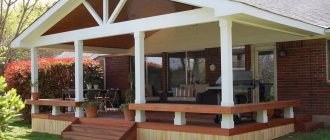A little history
The use of small architectural forms began in the Renaissance, when landscape gardening ensembles became widespread in Europe. Specialists of various levels worked on their creation: from a simple gardener to a famous architect or sculptor.
In the countries of the East, since ancient times, small architectural forms have been an integral part of gardens of contemplation.
Decorative fountains, pagodas, compositions made of stones - all these design elements not only had a symbolic meaning, but also contributed to creating a mood of calm and tranquility.
In Rus' they have always loved working with wood. Carved pillars with fancy figures of animals and birds. Figures of epic heroes. Benches. Wells. All this will later be adopted by landscape designers in their work.
History and facts
According to historical data, the Renaissance is considered the beginning of the birth of small architectural forms. During that same period of time, in Europe, most Italian gardeners, sculptors, and architects worked on reproducing park and garden areas.
In the Eastern countries of the globe, in Japan, a very important role was given to stone as the main element of a garden plot, as convincingly argued by Japanese philosophers of that time. Thus, in their opinion, the truth can only be known through contemplation of the surrounding world. Stone sculptures, like just stone in other ways, were shrouded in sacred and symbolic meaning. Even a small garden plot necessarily required the presence of stone MAFs. Unlike the ancient Japanese side, on the territory of Rus' special attention was paid to wooden products. In this side, the tree was extolled and worked on masterfully. Frequent visitors to Russian territories were animals and birds from famous fairy tales, mighty heroes and other wooden heroes of folk tales.
Carved bridge – MAFs in Russia
And therefore, decorating the site with the help of small architectural forms, at that time it was possible to easily set the desired stylistic direction. In the modern period of time, MAFs play the same meaning.
Purpose
Small architectural forms should not only add variety to the decor of the garden, but also perform practical functions.
You can sit on a comfortable bench, a gazebo entwined with greenery will save you from the scorching sun on a hot day, and a pergola will become a support for climbing plants.
Small architectural forms - definition and varieties
Small architectural forms are elements of street decor (exterior) that are used to create favorable conditions in urban, courtyard and garden areas. Some of them are already known to you, but you will get to know others that came into modern life from the times of antiquity and the Renaissance.
Landscape design of a garden plot consists of many small architectural forms - compositions and structures that perform aesthetic and practical functions
The use of MAF in a garden plot gives the area a certain stylistic direction
Elements of architectural forms:
- Fences and fences.
- Gazebos.
- Flower beds and flower beds.
- City and garden benches.
- Sculptures.
- Fountains.
- Monuments.
- Rotundas.
- Hedges and canopies (pergolas, trellises and berso).
- Monuments.
- Bridges.
A properly selected garden sculpture looks elegant and relevant.
Wood is the most affordable material for the manufacture of small architectural forms; here everything is limited only by your imagination and desire
Small architectural forms (hereinafter referred to as SAF) include not only the elements that decorate the courtyard area of the site. Also, there are city MAFs, which include:
- kiosks without foundation;
- pavilions;
- telephone booths;
- lighting poles;
- benches;
- flower beds;
- squares and parks.
In any well-maintained recreation park there are many small architectural forms
Contemporary art is capable of creating interior and exterior items from ordinary things. In cities of different countries, on the streets and squares you can find unique and inimitable elements of mafas that are unique to this place. They characterize this particular city; their distinctive features are recognized in all corners of the world.
The famous English telephone booth is red. It has gained great popularity due to its unique design. Its elements and images are used in printing for photo wallpaper, ceramic tiles, clothing and paraphernalia.
The red color of the telephone booth is explained by the climate of England. Bright colors are best seen in the London fog
See alsoDesign of gazebos in different styles.
Material
Decorative elements in a garden plot must be of high quality, but they do not necessarily have to be expensive.
To create them, you can contact a specialist, or you can do it yourself. In this case, a creative approach is encouraged, which is manifested in the originality of the design and the selection of unusual materials.
For small architectural forms you can use the classics: metal, wood, brick, stone (natural and artificial). Or you can find a use for old unnecessary things or even garbage.
You can look for ideas for decorating a garden plot in magazines for gardeners, where a huge number of photos of small architectural forms are presented. Or look through the pages of the Internet.
MAF classification
The world of LFA is diverse, and it is not easy to navigate it. Specially developed classifications come to the rescue. Depending on the function performed, small architectural forms are divided into:
- Universal - designs that everyone uses. Typical representatives of this group of MAFs are benches, benches, urns, lanterns, lamps, drinking fountains, flowerpots, etc.
- Leisure facilities - swings, carousels, sandboxes, slides, barbecues, and other equipment.
- Decorative - decorating the exterior of the site. These are all kinds of fountains, sculptures and sculptural compositions, gazebos, rotundas, bridges, pool mosaics, ponds and streams, arches, fences, stairs.
According to their intended purpose, there are two groups of MAFs:
- Elements that evoke aesthetic pleasure and create an atmosphere of comfort.
- Architectural objects designed to provide comfortable conditions for living and recreation that have functional significance.
The second group of architectural forms is divided into several subtypes:
- Structures that serve to delimit space into functional zones - all kinds of stairs, partitions, fences, retaining walls, bridges, arches, flowerpots, etc.
- Elements for arranging a recreation area - gazebos, pavilions, benches, swings, barbecues, fireplaces, playgrounds and sports grounds.
- Solutions responsible for the comfort of the area - lights, drinking fountains, trash cans.
The material of an architectural structure can be very different - stone, concrete, metal, wood, brick. MAFs made from combined materials look especially impressive, for example, a forged gazebo with stone trim. Such elements are made in different sizes. They have one thing in common - the absence of a capital foundation.
Rotunda
It is very similar to a gazebo, but differs in its obligatory round shape and the presence of a dome and colonnade. Typically, a rotunda is built of stone or brick.
This type of building is much less common in landscape design, since it does not always fit organically into the garden plot.
- A DIY mailbox is a beautiful decoration and a useful addition to a suburban area
A house for children is a place where a fairy tale becomes reality, we create it ourselves
Bridges for a dacha - a picturesque element of the landscape in a suburban area
Types of MAF by purpose
All MAFs have their own functional purpose and at the same time have aesthetic appeal; they create comfort and coziness in the recreation area located in the garden. The functional purpose of small architectural forms can be divided into three groups:
- Zoning of the site. Often when creating a landscape design, it is necessary to divide the site into zones. The following elements of landscape architecture will help to accomplish this: decorative fences, trellises, pergolas, retaining walls, parapets, bridges, stairs, fountains, sculptural compositions, topiaries, arches, flowerpots, etc.
- Arrangement of places for rest. Garden areas near the house primarily serve as a place for relaxation. Various shady canopies, belvederes (observation platforms on a hill with or without a canopy), gazebos with garden furniture, swings, barbecues, etc. can make it comfortable.
- Creation of additional amenities on the site. Such MAFs include lanterns, drinking fountains, and trash cans.
Trellis
Structure for supporting climbing plants. This is a light lattice, which, together with overgrown bindweed, creates a vertical screen and divides the garden space into separate zones.
Wooden slats, metal rods or even thick wire are used as materials for trellises.
Garden bridges
These small structures are installed in areas both above the water and above the path or above the so-called dry stream. Their placement should be logical and functionally justified.
Such a bridge can be a crossing point over a stream or simply an observation deck from which beautiful views open up.
They can be built from wood, stone or metal.
What applies to MAF improvement
Small architectural forms of improvement include urban space, which makes up the aesthetic appearance of a modern city. In this case, MAFs are exclusively decorative or utilitarian. While the aesthetic part is responsible only for the visual part, the utilitarian part performs a number of useful functions for the urban space.
Over time, a system was created with various types of creative approaches to landscaping. A large number of types of services in this direction have appeared on the market of small architectural forms, from simple to complex solutions in design and production. Modern specialists are faced with the task of not only creating a territory with harmoniously combined elements, but also taking into account geographical, historical and many other urban planning factors.
In landscape design, small architectural forms are used to work with space, visually narrowing or expanding it, making it more voluminous, filling it with meaning and color.
When purchasing a MAF for your home, such as a garden bench or any other park furniture, you should take into account not only the aesthetic and functional part, but also choose elements that will have a common style. With this approach, you will be able to create an aesthetic and comfortable environment in your personal area.
garden furniture
First of all, these are benches. Despite their simplicity and small size, it is the benches that bring home comfort to the garden space. They can be dispersed throughout the territory: along paths, near a fountain, in a gazebo.
Externally, they can be either very simple or with an original design. With and without backs. Portable or buried in the ground. Wooden, metal and stone.
The main thing is that they should be comfortable. Well, beautiful.
Fountains
A fountain can become the pride of a site. It can be placed in the middle of the pond, or it can be made into a separate structure. In the latter case, the drainage system needs to be thought through at the design stage.
Decorative small architectural forms
These are garden decorations, sculptures, figures and flowerpots. The design of these architectural forms can be very diverse.
Sculptures are usually placed on elevations, and they are designed for all-round visibility. Of the garden figures, gnomes and images of animals are most often used.
Flowerpots can be of any size and shape. Some also include elements of sculpture, which makes them real works of art.
What are small architectural forms (SAF)
This is the name for structures used to decorate the territory of a garden plot or cottage. In addition to their decorative function, they also have practical significance. Such objects help to conveniently organize planting in areas of different sizes and create a relaxation area. They are not fundamental structures. Many types can be made with your own hands from wood, metal, or using old objects.
Purpose of the MAF
Small architectural forms are used for several purposes:
- decorative (territory decoration) - openwork gazebos, alpine slides, statues, light bridges, sculptures, fountains;
- functional (have a practical purpose) - flowerpots, flower beds, pergolas, vertical flower beds and other structures for plants, stairs, garden furniture, swimming pools, gazebos, fences of various types;
- entertaining - architectural forms for sports and gaming purposes, for example, sandboxes, slides, swings, horizontal bars and others.
Many types of MAF are universal. They simultaneously transform the site and have practical value. These include gazebos, lanterns, swimming pools, garden benches, and flowerpots.
Sports grounds
If the space of the site allows, then you can build a sports ground. Both adults and children will enjoy spending their free time there.
A sports ground can be built outdoors, under a canopy, or even in a pavilion.
At a summer cottage, the set of sports equipment is minimal: a horizontal bar, parallel bars, a monkey bars, a bench for lying down. You can do all this yourself.
When arranging a sports ground, you need to consider some points:
The site should be in a shaded area to avoid practicing in direct sunlight and to avoid overheating of the equipment. Otherwise, it is better to build a protective awning.
There should be no flower beds, trees or beds near the site. This will help prevent injuries during training and not damage the plants.
The sports ground should not be located in a low place to prevent water from accumulating on it. Or make good drainage.
To cover the site, you can use either natural or rolled turf, rubber covering (regupol) or self-leveling covering (concrete screed)
Liana supports
It is difficult to imagine a garden without upward-facing “green walls”.
When creating them, it is difficult to do without vines, especially in small areas, because they successfully play their role, but take up very little space on the ground! Special structures help climbing or climbing plants to “get back on their feet” - arches and garden screens (lattices, trellises or trellises). At the same time, spectacular vines benefit only “paired” with beautiful and well-placed supports - an unsuccessful design will compromise even the most luxurious plant. Where to put it? The lattice will help to distract the eye from unsightly or boring places - for example, from the vegetable garden (photo 1).
Arches and garden screens serve not only to support vines, but also to divide the area into functional zones. Photo 2 shows how a “curtain” of virgin grapes and Coignier grapes visually separates the garden from the house. This living screen always looks wonderful, and in the fall its beauty is striking.
(Photo 2). Photo: Tatyana Shikanyan
Using a series of arches, you can create a transition from one part of the garden to another.
How to choose? The supports should not only match the house and the general idea of the garden, but also suit the vine physically and visually. That is, an arch or screen for a large and heavy plant should be strong and solid, while an elegant plant “lace” needs a light openwork “wall”. Among other things, you should consider the method of attaching the vine to the support.
Standards
The dimensions of the arch should be such that people can easily walk and stand under it. Its minimum width is 1.2–1.5 m, height is at least 2.1–2.2 m. In addition, the arch must have a “thickness” of 50 cm or more - a side wall, around which, in fact, and vines will grow. The shape of the arch arch can be very diverse - round, rectangular, triangular, etc.
Children's playgrounds
If there are children in the house, then a great solution would be to make a play area for them in the yard. Architectural forms for children's playgrounds include swings, sandbox, house, stairs, slides, etc.
The gaming complex can be either ordered ready-made (plastic buildings are especially popular) or made with your own hands.
In this case, you can show your imagination and make children's architectural forms original and interesting. For example, what child doesn’t dream of a tree house? Or about a little house with painted shutters.
Diversify the design of your summer cottage with small architectural forms. This will not only make your site functional and harmonious, but will also add zest to the appearance of your garden.
Small architectural forms in landscape design
You can also make a real well if in your area the water layers run close to the surface of the earth. For a summer cottage, this landscape design will fit perfectly due to the fact that approaches and garden paths can be omitted (that is, they are not required).
This will save a decent amount of money on paving slabs or natural stone. A wicker fence made of branches or rattan will suit this design. All sorts of elements of everyday life of that time - horse-drawn carts, small mills and cellars.
Decorating a small pond in a rustic style
Stone cellar in the style of yesteryear
A cellar, just like a well, can be made with a real basement. The entrance to the basement can be made in the form of an ancient Greek tholos with elements of Russian antiquity (jugs, vases, etc.). This solution will create a unique landscape design, and characterize its owner as a connoisseur of originality and originality (eclecticism in landscape design).
Garden benches are made from a single piece of cut trunk with a pre-cut seating area. Gazebos are made of oak crown.
Landscape design of a country house
A private house implies permanent residence here, as well as frequent visits from guests. Therefore, the landscape, in addition to the stylistic accent, must satisfy the functional needs of residents. Paths between flower beds and beds will look beautiful if they are made of natural stone. The natural pattern of such material will add a touch of exclusivity. It is worth carving out space for sidewalks not in a straight line, but with intricate turns and smooth bends. This breakdown of passages in itself will add uniqueness to your landscape design.
Flat stone garden path
Durable clinker brick walkway
Wooden path in a wild garden
To create overlapping maps, you need to create a preliminary design plan and follow it strictly. In relation to our smooth paths: express smoothness in all elements of the maf. Purchase special varieties of shrubs with a rounded shape from a gardening store (to achieve roundness, you will have to work frequently with garden shears). Also get wavy benches. Horoscope lovers will be interested in the design of a round-shaped bench with twelve zodiac signs printed on the tiles underneath it. You can also place a dial there and arrange a sundial.
To create a sundial, you can use various materials.
Bridges over artificial ponds or streams will add a fairy tale element to your landscape design. The shore should be paved with natural cobblestones. Smaller pebbles are also placed at the bottom of the stream. The central object of this colonnade of small architectural forms can be a famous ancient Greek sculpture or a beautiful fountain.
Wooden bridge over a garden pond
An elegant sculpture of a naked bather will fit perfectly into a small body of water.
Thanks to a large selection of building materials, wood and the use of metals, it is possible to create a wide range of landscape design options. Competent and organized arrangement of the site with small architectural forms is available to every homeowner.
